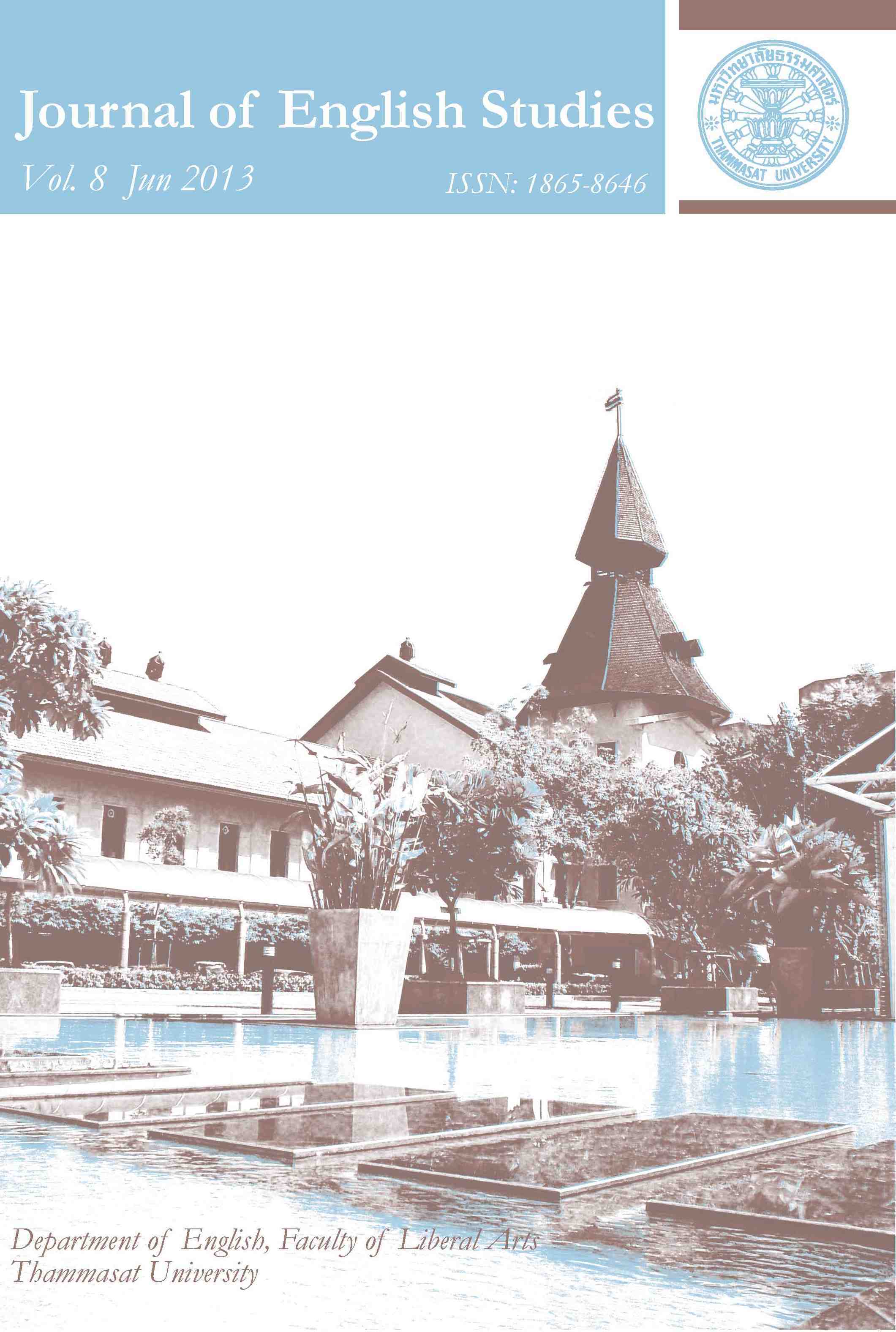Prejudicial Assessment? The Inherent Flaws of Reading Comprehension Test for EFL Students
Main Article Content
Abstract
This paper presents and discusses an analysis of the validity of using L2 to test learners’ L2 reading comprehension, a case study of a multiple choice test type. Participants were 242 Thai university students who took a foundation English course at a university in Thailand. They were asked to complete two sets of English reading comprehension tests in which both shared an identical reading passage. However, the two sets differed in that the questions and their coinciding choices came in an English version and a Thai version. Results showed that participants received significantly higher scores in the Thai version than in the English version. More specifically, students with low English proficiency benefitted more by taking the test in Thai (L1) while students with higher English proficiency did not receive any benefit. Furthermore, using L1 helped students when the question was detailed with multiple choice options containing long phrases, clauses or sentences. However, this was not the case in an inference question, or a detailed question with only one-word multiple choice options. Thus, this paper argues in favor of using L1 in multiple choice questions and their multiple choice options to assess learners’ L2 reading comprehension as opposed to the presently existent practice of using the L2, which by itself frequently poses understanding difficulties for low proficiency students. Key Words: L2 reading comprehension test; test validity; test bias; multiple choice
Article Details
How to Cite
Wuttipornpong, T. (2014). Prejudicial Assessment? The Inherent Flaws of Reading Comprehension Test for EFL Students. Journal of Studies in the English Language, 8. Retrieved from https://so04.tci-thaijo.org/index.php/jsel/article/view/18183
Issue
Section
Articles
Authors who publish with this journal agree to the following terms: Authors retain copyright and grant the journal right of first publication with the work simultaneously licensed under a Creative Commons Attribution License that allows others to share the work with an acknowledgement of the work's authorship and initial publication in this journal. Authors are able to enter into separate, additional contractual arrangements for the non-exclusive distribution of the journal's published version of the work (e.g., post it to an institutional repository or publish it in a book), with an acknowledgement of its initial publication in this journal. Authors are permitted and encouraged to post their work online (e.g., in institutional repositories or on their website) prior to and during the submission process, as it can lead to productive exchanges, as well as earlier and greater citation of published work (See The Effect of Open Access).

